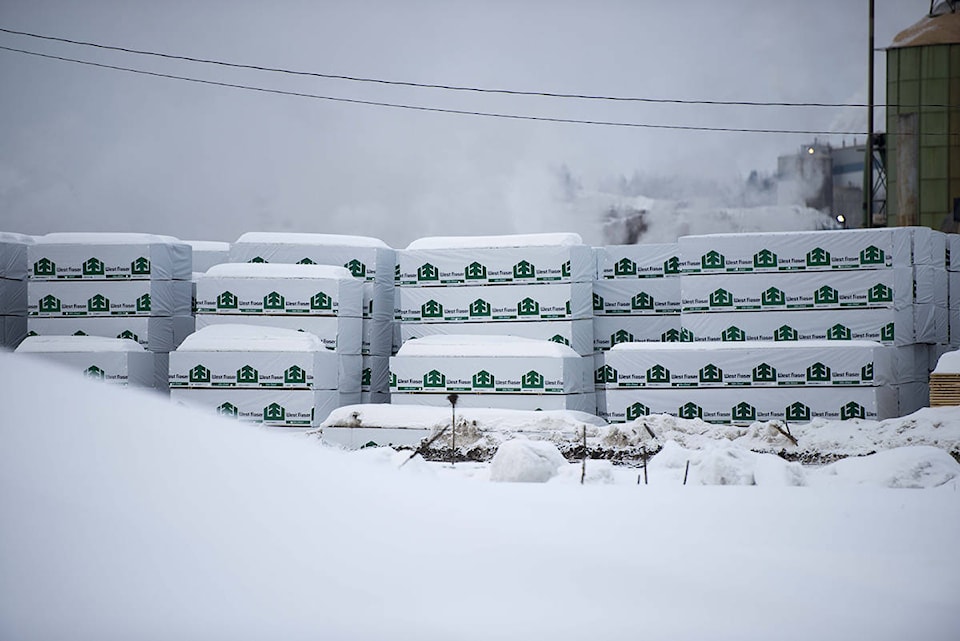On Feb. 27, the City of Quesnel council received an update regarding West Fraser Quesnel fibre and operations from regional manager D’Arcy Henderson and woods manager Stuart Lebeck.
Henderson and Lebeck led council and the gallery through a PowerPoint handout with comments.
Operations
Henderson said West Fraser consumes around 2.4 million cubic metres of logs annually, most of which goes to be plywood, lumber and remanufacturing facilities.
The residuals from these systems – sawdust and shavings, chips and bark (fuel) – go to the two pulp mills, the medium density fibreboard (MDF), pellets for pellet plants, and heat and electricity facilities.
“So every log that goes through the mills is fully utilized across the city.”
The general manager noted WestPine MDF, a division of West Fraser, went through a very successful rebuild.
Fibre access
Henderson showed a slide that deals with potential supply of logs and some of the challenges with those log capacities – timber supply area volume from 100 Mile House to Quesnel.
In 2018, the forecast for available logs is about four million cubic metres short of what it was in 2013 in the terms of meeting supply demand in the Cariboo.
Noting the lowering trends in the annual allowable cut of fibre, the general manager noted: “This is where West Fraser leans on its competitiveness and our ability to utilize those logs that come into us for the highest valued products, whether it’s panels or sawmill, and we are able to compete outside the Quesnel region.
“We are moving logs quite a distance these days. You’ll see trucks from Fort St. James and Mackenzie areas through Vanderhoof and down into our area.”
Henderson says the transport of fibre was not a mistake or simply good fortune for West Fraser.
“There was a strategic plan to diversify the business to assure we could be competitive across the regions and move logs into Quesnel for processing and continue on production to where we are today.”
Residual chip supply
Henderson says residual chips and the byproduct that comes out of the sawmill plays a big role in West Fraser’s operation.
He adds there is an impact and a supply crunch as sawmills curtail or possibly reduce the chips across the Cariboo.
“Our facilities here are largely furnished with residual chips from all the operations across the Cariboo and through Dunkley in Prince George.
“The gap between available chips and demand for those chips by our pulp mill is being furnished by whole log chipping.
“There are two whole log chipping facilities in Quesnel. There is a partnership with Tolko and a whole log facility on the back end of our sawmill.
“We’re recognizing today that we have to move more chips from outside our region, so we’re actually moving chips from our Fraser Lake sawmill to Cariboo Pulp & Paper today.”
He noted that it puts a large demand on sides of the business – trucking and transportation – whether it be logs or residuals or lumber, which is becoming a major issue for West Fraser.
Residual sawdust and shavings supply
Noting West Fraser fully utilizes the sawdust and shavings at the Medium Density Fibreboard facility, Henderson said it’s a bit of a challenge to get the high-value fibre, which makes the highest-value board for the MDF facility.
“It is becoming more and more scarce and is utilized by pellet facilities and with our agreements with other local operators. Again there’s a gap to fill there.”
Read the Friday (March 9) edition of the Quesnel Observer for regional impacts, mid-term lumber AAC on Quesnel and a Q&A between West Fraser and council.
